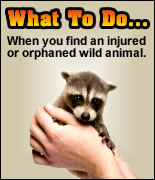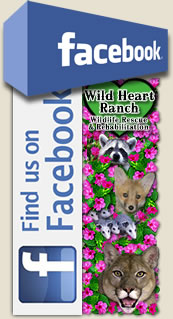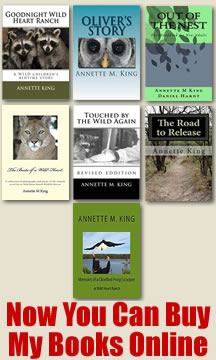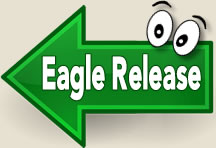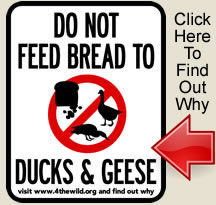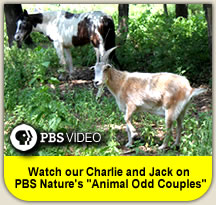

Wildlife Laws
Laws of the land...for wildlife in Oklahoma
"Why you can't keep 'it' "
In the State of Oklahoma, it is illegal to possess wild born native animals without a rehabilitation permit. The penalties are hefty fines and even jail time. In imprint cases, the animals are often destroyed.
Many people find themselves in love with a baby raccoon, fawn or squirrel, only to call for instructions to care for it and be told they are required to give the precious baby up. I have sympathy for those people. I know how endearing these animals can be, but life in captivity as a pet for any wild species, rarely has a good outcome.
I used to give advice for care when someone called determined to raise the rescued wild babies themselves. I cannot do that anymore if there are licensed wildlife rehabilitators available in your area. I will give emergency advice and help you locate a facility, but I will no longer share long term instruction. Recently, my instructions were misunderstood as permission to raise the animals, and this was reported to authorities. Not good for me, and certainly not good for the animals I need to assist in the future.
All species require special care as infants. Fawns who were fed pasteurized or canned milk often arrive in my care, dying from dehydration as a condition called 'scours' takes over and the babies begin to fail, miserable and weak, eventually bleeding from their GI tract. It takes weeks of diligence, day and night care to turn these fawns around and save their lives, IF its not too late for them. I love my work, but I resent losing sleep and working exhausted because someone decided to keep the beautiful fawn, and only sought help when they realized they didn't know what they were doing. If the animals suffer, I will suffer. It isn't fair to anyone involved.
All mammal, bird and raptor babies have special diets that WITHOUT QUESTION, must be followed for survival. Wildlife rehabilitators are trained to know these diets, have the formulas and supplements on hand and are able to identify problems early, before life threatening conditions develop. We resent being brought a sick baby who was found healthy. We know what has happened. We see it constantly. There are 'tell tale' signs that an animal has had improper captive care. If you can find us when there is a problem, you can find us before you have one. Get the animals to us when they are found and healthy, BEFORE you make a poor decision. Often we use certain formulas we prefer, and even though you may have researched a feeding regimen and are feeding a proper formula, when you decide to turn the baby over, we may switch to what we use, causing an upset to the digestive system that we then have to deal with and the animal must suffer through this as well.
Imprinting a wild baby to a human and domestic animal family is simply wrong. I have seen the news clips of a baby squirrel nursing on or interacting with a dog or cat. It makes me want to scream. It is not cute, it is DEADLY. If this animal is ever released, it has already lost the fear of its primary predators which are dogs, cats and of course, humans. We want to release YOUNG, INDEPENDANT, NON-IMPRINTED wildlife. Anything else is risky and their chance of survival is reduced.
Some day this baby will mature and become resentful of captivity, and will usually become aggressive and destructive at around one year old, if not sooner. Having never been left alone to bond with others of it's own species or break the imprint with humans, this animal will not be fit for release. When I receive animals in this shape, I have to house them in one of my few outside cages meant for pre-release and recovery, feed and clean them for anywhere between 6 months and one year until they become reclusive, and even then there are no guarantees this animal will avoid domestic animals and people upon release. It is a lot of time and expense, and even then, the chances of survival have been reduced by HALF, despite my best efforts. Imprinted raccoons can become aggressive. Some of them will attack people. This makes them a menace to release, and a danger to humans, especially children. We cannot keep them for any reason. We are supposed to euthanize these animals.
The resources and time it takes to try to 'wild up' an imprinted animal are lost from other animals that need care and new cages will have to be constructed as room is needed. This is a tremendous burden to place upon rehabilitators who are already donating all they have to spare, so PLEASE do not hold or tame wildlife believing that you can find a home for it if the animal becomes aggressive later. We cannot keep them either. We have six months to release an infant or euthanize a disabled animal unless we obtain special permission to keep one longer, and we try to reserve that for injured animals who need more time. It is not fair to us to have to use this time extension for human error in judgment. Please, help us out by keeping yourself and the wildlife out of this predicament.
In my yard right now are 6 fawns. I took in 22 fawns this spring. Out of 22, 2 died from injuries by domestic dogs, one more came in with her rectum, tail and genitals removed by the 'family's pet who "just loved the fawn at first", (she survived, maimed for life, but saved and healed after weeks of extensive care) Ten of the 22 fawns arrived as true orphans, wild and emaciated from starvation. Those were stabilized and sent out to newly licensed rehabilitators wishing to learn to raise wild fawns. The remaining 10, including the doe without a tail, were ALL imprinted to the people who found them, having spent time without other deer, creating bonds with humans and domestic animals. 4 of those I sent to the OKC zoo for a lifetime of care and protection, and the remaining 6 are here with me, acting like dogs, NOT deer. I will have to feed them and protect them until they are large enough to escape from predators, wait until the end of hunting season, the arrival of spring forage and THEN the tame adult deer will be too large to move, so I will run them out of the protective fence and they will spend their time trying to get back in, eating my neighbors gardens and behaving like complete pests. It's frustrating.
If you are reading this and feeling strongly that my opinions are harsh, remember that out of an average of a thousand animals brought in by people to me each year, half are directly out of the wild and their experience here is textbook, one fourth are rescued with injuries requiring extensive care and expense, and one fourth have had attempted care by well meaning people and arrive sick or imprinted, creating extra work, extensive time in a cage and suffering that could have been avoided. That is an average of 250 animals per year, and that is only the ones found and brought to me, and those are only the survivors up to that point. These are the expensive charges in both time, medical resources and facility. PLEASE think twice before assuming it is acceptable to turn animals over later when there is a problem.
Most of the animals that come in sick are suffering from metabolic bone disease, hypovolemic shock, dehydration from scours, intestinal impaction, hypothermia and emaciation. All of these conditions can be caused from improper captive care, though sometimes the animals are found hypothermic and emaciated. All of these conditions are potentially deadly. PLEASE get the animals in to be evaluated by the professionals as quickly as possible. I only ask on their behalf.
Annette King
Wild Heart Ranch Wildlife Rescue

 New Driving Directions
New Driving Directions
